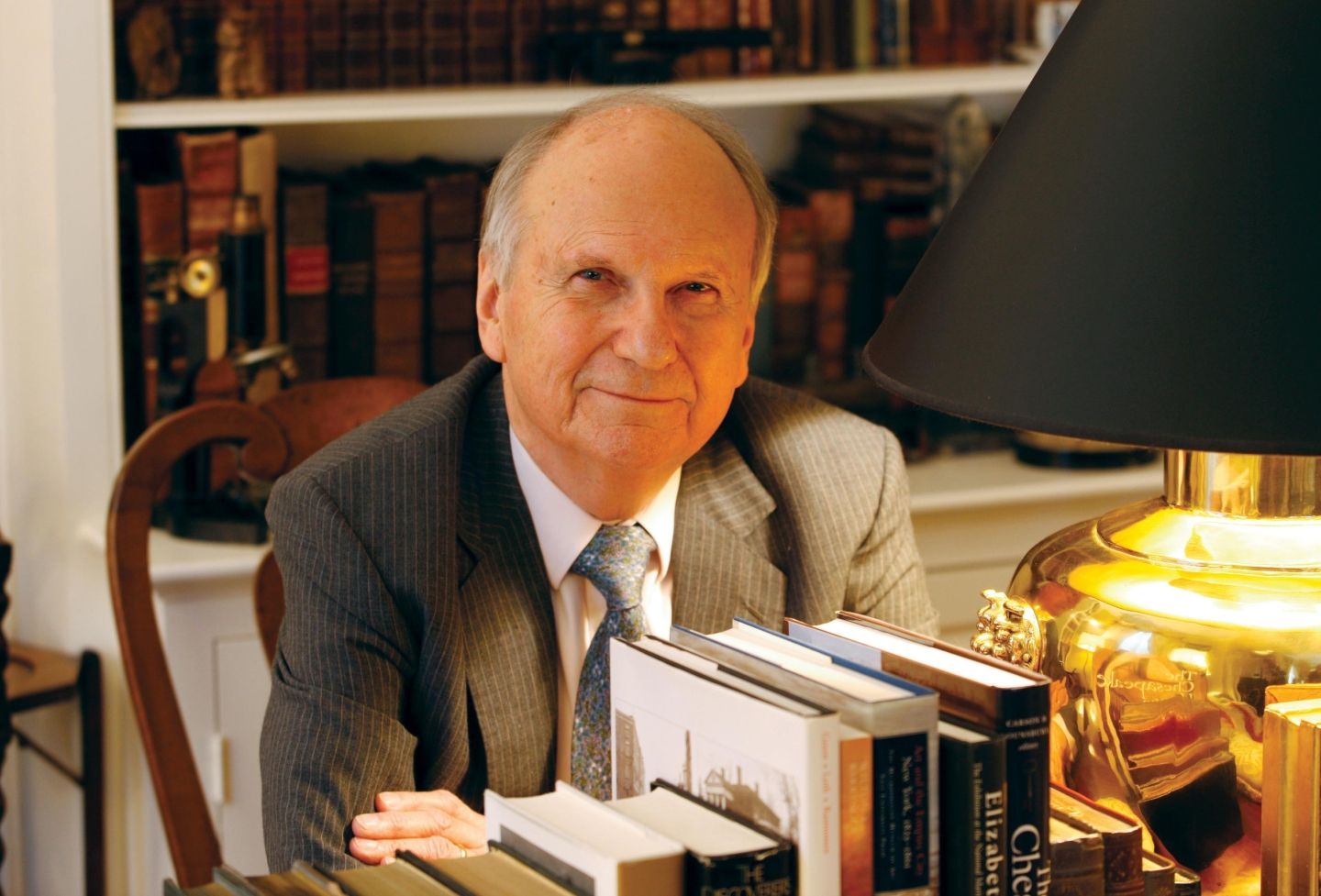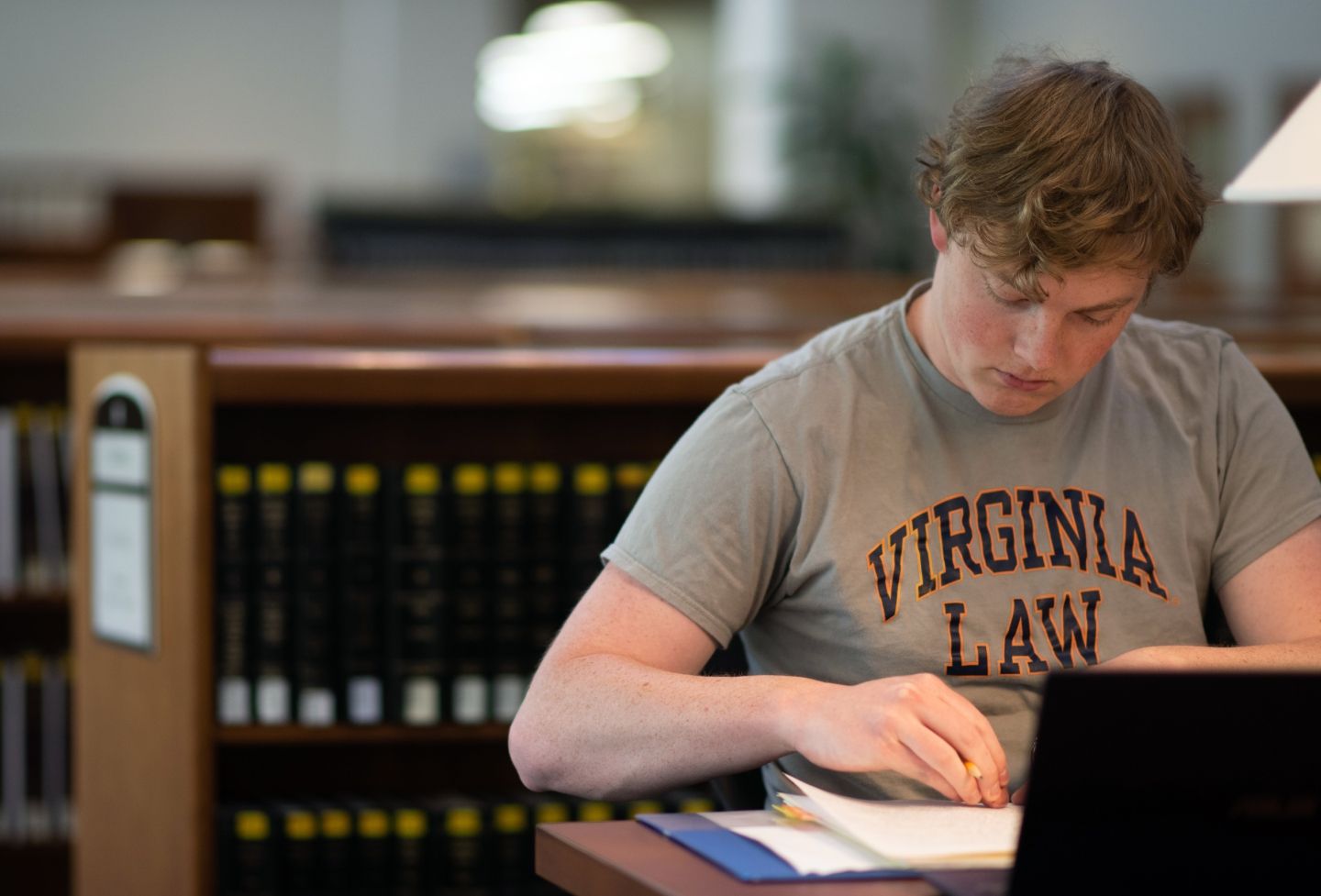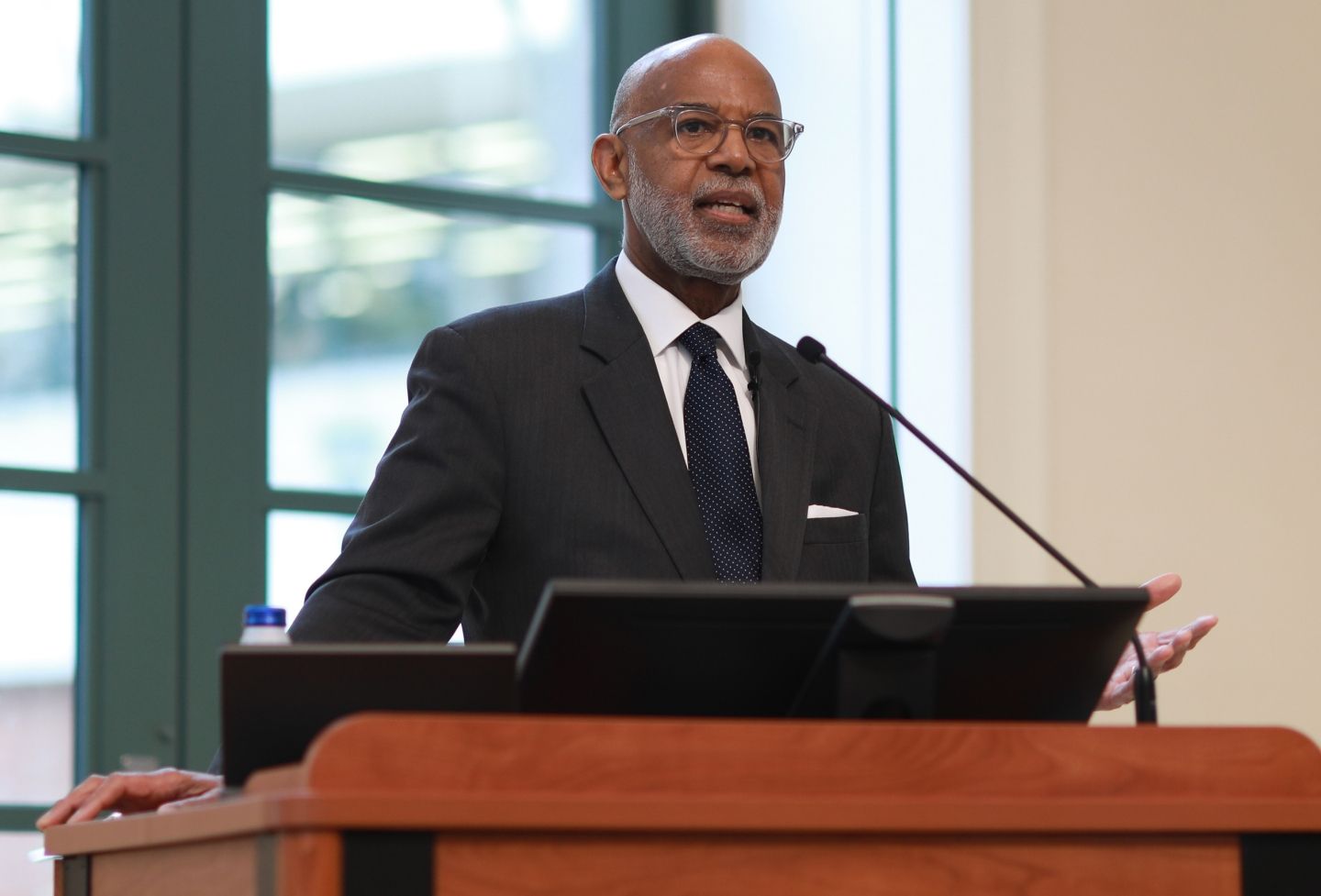When Kent Sinclair arrived at the University of California, Berkeley, as a law student in 1968, the campus had become a hotbed of anti-war and leftist activism. Over the next three years, the university witnessed some of the most tumultuous student protests of the era.
“There were National Guard troops on every corner for my second and third years of law school,” Sinclair said. “It was a police-state feel in some respects, but the law school was a little citadel on a hill.”
Sinclair spent most of his time up in that citadel, working methodically at honing his skills rather than joining his more revolutionary-minded colleagues down at the barricades.
Retiring in August as a UVA Law School professor and director for advocacy and lawyer training, Sinclair can look back on a career that proves the value of quietly working toward change over time.
Across Virginia, he has played a leading role in updating the state’s civil court procedures and evidentiary rules. At the Law School, he has helped expand clinical education.
Throughout his career of incremental reforms, Sinclair continued his work as an educator, teaching civil procedure, evidence and Virginia practice. He published more than a dozen books, including textbooks on Virginia civil procedure as well as trial handbooks, and he continues to work on new editions and updates.
Roots in Court
Sinclair's grandfather was a California lawyer and his great-grandfather was a barrister in London, so it felt natural for him to study law.
“It seemed like the path for somebody who liked public speaking and writing and marshaling of arguments,” he said.
At Berkeley’s Boalt Hall, Sinclair developed his abilities in oral and written argument. He worked on the California Law Review as the chief notes and comments editor, and won the school-wide James Patterson McBaine Moot Court Competition.
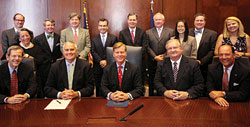
After graduating, Sinclair clerked for Chief Judge James R. Browning of the U.S. Court of Appeals for the Ninth Circuit.
He next joined the litigation department at Shearman & Sterling in New York, where he focused on securities and antitrust litigation. Nearly all of his experience was in civil litigation, with his only criminal experience coming during a stint representing the chairman of Gulf Oil during the Watergate prosecutions.
In 1976, a magistrate judgeship became available in the U.S. District Court for the Southern District of New York. Magistrates are responsible for the handling of civil and criminal cases, handling pretrial matters in civil litigations and preliminary proceedings in misdemeanor cases, setting bail or conducting evidentiary hearings. They also preside at civil trials on consent of the parties.
The position required expertise in civil procedure and the law of evidence, and appealed to Sinclair’s desire to grow beyond advocacy.
“It had that judicial role, that independence, and the obligation to try to be fair and to weigh the arguments rather than to push for a particular client’s position,” Sinclair said.
He applied for and received the position.
Sinclair’s experience handling securities and antitrust cases dovetailed well with much of the New York Southern District Court’s docket, which oversaw New York’s financial industry. However, the judges worked on rotation; Sinclair presided in criminal court once every seven weeks. Since his experience in criminal matters was more limited, he had to hustle to catch up.
“I followed a lot of checklists and did a lot of research in the weeks when I was on criminal duty,” he said.
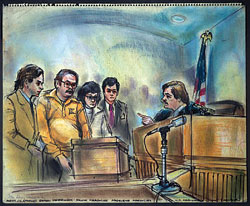
After about seven years on the court, Sinclair decided to pursue a passion he had begun developing while at Shearman & Sterling: legal education.
Creating Clinics
Sinclair's teaching career began in 1973. He taught evening classes on evidence and trial procedure at Fordham Law School.
“I looked forward to that every year when the academic year began,” he said. “So when it came time to leave the court, it was pretty clear that devoting my energies to teaching, as opposed to going back to a large New York law firm, would be a more satisfying path.”
Sinclair and his wife, Katy, moved to Charlottesville in 1983. The first classes he taught at UVA Law were Civil Procedure and Evidence. He also supervised the Virginia Continuing Legal Education Office part time and oversaw the Law School’s Criminal Defense Clinic.
In the early 1980s, there was no clinical education department, just the lone clinic.
“Clinical education at the time was not a focus for top law schools,” Sinclair said. “That started to change.”
Under Dean Richard Merrill and continuing through Dean Bob Scott’s tenure, Sinclair worked with the Charlottesville Bar Association to identify bodies of litigation in the local courts that might allow students to engage in supervised practice.
“We were fortunate in 1984 to hire Richard Balnave from Pennsylvania to work on a clinic involving domestic relations law,” Sinclair said. “And I guess the trajectory of the Law School’s clinical offerings has been steeply upward ever since.”
Today, clinical training at the Law School is robust. Nineteen clinics — 17 taught this academic year — allow students to gain experience on actual cases.
Balnave retired last year, becoming professor of law emeritus. He praised Sinclair for his part in laying the groundwork for expanding hands-on student experience opportunities.
“Kent worked with faculty to identify curricular needs and expert practitioners who might willingly give their time and efforts to help our law students delve deeper into their areas of interest,” Balnave said. “It was a large and time-consuming responsibility.”
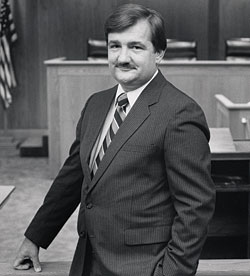
Along with developing clinical education, Sinclair and Balnave also worked together to increase the availability of alternative dispute resolution in Virginia. From 1986 to 1992, Sinclair served on the Virginia State Bar Task Force on Alternative Dispute Resolution, which developed statutes that made it easier for parties to seek remedies outside of litigation.
Sinclair and Balnave ran a service that provided local Virginia groups with draft versions of the documents they needed to set up community mediation centers. Mediation allowed parties to adopt a less adversarial approach to conflict resolution.
“There is a positive social good in allowing people to come to their own agreements to resolve things,” Sinclair said.
"Stealth Reform"
When Dean Scott wanted Sinclair to devote time exclusively to teaching and law school administration, he resigned from the Office of Continuing Legal Education. One of his teaching specialties was Virginia law.
In 1986, Virginia Supreme Court Chief Justice Harry L. Carrico appointed Sinclair chair of the Virginia Supreme Court’s Advisory Committee on Rules.
“Virginia was, prior to the 1980s, very quirky,” Sinclair said. “It held out against a large number of reforms and modernizations that characterized civil litigation in the federal system and in most states.”
One issue affecting Virginia courts was separate rules for equity cases versus “cases at law,” such as contract or tort cases. This arrangement was a relic of the 19th century, but had survived efforts at reform. It allowed some litigants to manipulate proceedings by maneuvering cases into whichever court’s rules would be more favorable.
From 1986 to 2006, the Advisory Committee on Rules worked to reform Virginia procedures to bring them closer to the federal court rules. Reform was slow because some members of the Virginia Bar had stakes in maintaining specialized knowledge of the intricacies of Virginia’s old rules.
“There were people who could play that system like a violin,” Sinclair said. “They weren’t particularly interested in making it transparent, in making it simpler.”
To merge the rules involving equity cases and cases at law, he adopted “a conscious path of stealth reform.”
“I basically selected one or two rule topics every year and unified the provisions of the law and equity rules to function in the same way,” Sinclair said. “After 20 years of changing a rule or two at a time, we came to the position that there were no specialized rules that applied to one category of case and not to another.”
In 2006, the Virginia General Assembly amended the statutes to create a single form of civil litigation. The move was recognition that Sinclair’s reforms had knocked down the walls between different types of civil litigation.
“We had to change more than 40 statutes that had archaic provisions to allow a single, straightforward system of procedures and rules to cover all civil cases,” he said.
Sinclair was involved in another long-term reform effort to draft new Virginia Rules of Evidence that would track closer to the federal rules. He worked on the Rules of Evidence with a Virginia Bar Association group called the Boyd-Graves Conference for 20 years before the Virginia Supreme Court endorsed them and sent them to the General Assembly for approval.
“When I appeared before the General Assembly [in 2012] to urge them to adopt the Virginia Rules of Evidence, it was like selling motherhood and apple pie,” he said.
“Having clear, routinely applicable rules that could be used in arguments to the court and explained in case law seemed like a natural benefit.”
"The Long View"
Some antiquated quirks remain in Virginia procedure. For example, plaintiffs in civil litigation can call a “non-suit” and terminate a case at nearly any stage of the proceedings, even during trial, and start the whole process over.
But for the most part, the reforms instituted in 2006 and 2012 gave Virginia court procedures a much-needed modernization, bringing them closer in line with the rest of the country.
Sinclair expects to keep busy in retirement. He plans to continue working with the rules committee, as well as the Virginia Supreme Court’s Model Jury Instructions Committee, which edits a four-volume set of exemplary jury instructions relevant to the most common civil and criminal litigations.
Additionally, about eight of Sinclair’s books require regular updates.
“Much of my time for free intellectual energies is in updating those books from time to time and then doing newer editions every few years,” he said.
Looking back at the changes that have taken place over the past 30 years at the Law School and in the Virginia court system, Sinclair sees slow but beneficial progress.
“There was a bar presentation in the late 1880s in Virginia that urged that the equity courts should be separate from the law courts,” Sinclair said. “It took me 30 years of working on it, until 2006, so that’s over a century that people in Virginia have been looking for that form of clarity. You have to take the long view.”
Founded in 1819, the University of Virginia School of Law is the second-oldest continuously operating law school in the nation. Consistently ranked among the top law schools, Virginia is a world-renowned training ground for distinguished lawyers and public servants, instilling in them a commitment to leadership, integrity and community service.
